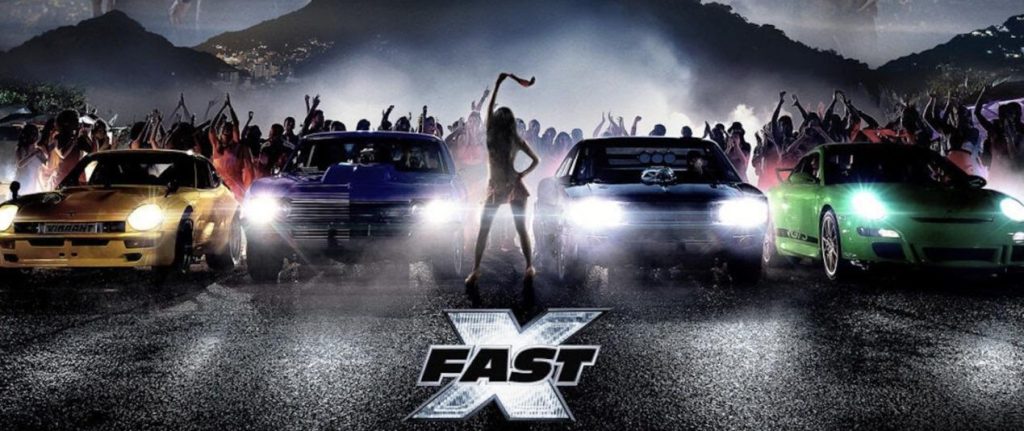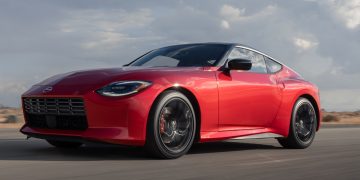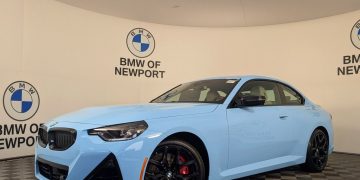Car movies have had a profound influence on automotive culture, shaping public perceptions of vehicles, performance, and the lifestyle surrounding them. Among the most influential of these films is the Fast & Furious series, which has become an icon in both mainstream cinema and the automotive world. Since the release of the first film in 2001, Fast & Furious has not only captured the attention of car enthusiasts but also played a significant role in popularizing car culture to a global audience. But how deep is the impact of these films on the attitudes of car fans, and has the Fast & Furious franchise changed the way enthusiasts view cars?
In this article, we will explore the relationship between car movies and automotive culture, focusing specifically on how the Fast & Furious franchise has shaped the mindset and attitudes of car enthusiasts. We will also look at how it has influenced the broader perception of cars, modification culture, and motorsport communities.
1. The Power of Car Movies in Shaping Car Culture
Car movies have long been a source of inspiration for car enthusiasts, fueling dreams of speed, style, and the excitement of driving. Films like Bullitt (1968) with Steve McQueen, Gone in 60 Seconds (2000), and The Italian Job (2003) have introduced iconic cars and thrilling chase scenes that have been etched into the memories of fans.
- Iconic Cars and Performances: In early car movies, certain vehicles became stars in their own right, creating lasting impressions. For example, the 1968 Ford Mustang GT500 from Bullitt became synonymous with coolness, thanks to McQueen’s unforgettable driving scene through the streets of San Francisco. Similarly, the 1967 Shelby GT500 Mustang in Gone in 60 Seconds earned legendary status in the car community.
- Performance and Innovation: Car movies have often showcased groundbreaking automotive technology and innovations. They’ve introduced the idea that vehicles are not just tools for transportation but can be enhanced and modified for performance. This focus on power, speed, and modification created an environment where tuning and customization became key elements of car culture.
- Cinematic Action and Speed: These films have made speed a central theme, presenting high-octane car chases, thrilling stunts, and performance-driven driving experiences that appeal to the audience’s sense of adventure. Such depictions helped turn cars into more than just machines—they became instruments of excitement and power, cementing their place as an integral part of action cinema.
However, no movie franchise has had as significant an impact on car culture as the Fast & Furious series.
2. The Fast & Furious Phenomenon: A New Era for Car Culture
The Fast & Furious franchise fundamentally changed the way people perceive cars and car enthusiasts. Starting with the release of the first movie in 2001, the series tapped into the hearts of car lovers by blending action with the vibrant underground car culture. Here’s how the franchise has influenced car culture:
Celebration of Car Modification and Tuning Culture
One of the most notable aspects of the Fast & Furious films is their focus on car modifications. The characters in the movies are frequently seen working on their cars, customizing them with performance parts, aesthetic upgrades, and unique styling elements. This portrayal helped to popularize tuning culture, especially the practice of modifying vehicles to make them faster, more unique, and more visually striking.
- Street Racing and Performance Upgrades: The first film focused heavily on the world of street racing, where car enthusiasts would modify their vehicles to push them to their limits. The cars in the movie were equipped with NOS (nitrous oxide systems), turbochargers, and customized exhaust systems, all of which became staples in the car tuning world. The franchise emphasized the idea that cars could be transformed into high-performance machines, pushing the boundaries of speed and power.
- Mainstream Acceptance of Modifications: Prior to the release of Fast & Furious, car modification was often seen as something niche or subcultural. The films changed that perception, bringing car tuning and customization into the mainstream. The aftermarket parts industry exploded in the wake of the films’ success, with fans and car owners eager to emulate the modifications seen in the movies.
- Influence on Car Builds: Cars in the franchise, such as Paul Walker’s Toyota Supra or Vin Diesel’s Dodge Charger, have become iconic in the world of car enthusiasts. The heavily modified Supras, Skyline GT-Rs, and Eclipse GS-Turbo from the early movies set the tone for a new era of car builds, where performance and style took precedence. The focus on visual modifications, like neon underglows, body kits, and large spoilers, made these cars instantly recognizable and led to an entire subculture of import tuning and fast street racing.
The Rise of “JDM” and “Tuner” Cars
The Fast & Furious series played a pivotal role in bringing Japanese Domestic Market (JDM) cars into the global spotlight. Cars such as the Nissan Skyline GT-R and Honda Civic were introduced to a wider audience, inspiring a new generation of car enthusiasts to explore JDM car tuning.
- JDM Cars: The JDM car culture gained immense popularity due to the Fast & Furious franchise, and the cars featured in the films became symbols of the tuner scene. Enthusiasts began to appreciate Japanese cars not only for their performance potential but also for their reliability and affordability. The popularity of the Skyline and the Supra among fans of the franchise led to a huge surge in interest in JDM cars and parts.
- Tuning Community Growth: The films helped solidify the global tuning community, making it more accessible to people around the world. The “tuner” movement, with a focus on modifying cars for both performance and aesthetic purposes, found its mainstream audience thanks to the visibility of the cars and tuning shops in the franchise.
Cultural Shifts in Car Enthusiasts’ Attitudes
Before Fast & Furious, car culture was often divided between different groups—muscle car enthusiasts, import fans, and European car aficionados. The franchise blurred these lines and brought diverse car cultures together.
- Muscle vs. Import: The early films, especially the first two, helped bridge the gap between American muscle cars and import cars. Characters like Dom Toretto, played by Vin Diesel, brought the raw power of classic American muscle cars, while Brian O’Conner, played by Paul Walker, introduced the finesse and precision of import cars. By showing both styles of cars side by side, Fast & Furious helped unite fans of both camps and opened the door for cross-pollination in car culture.
- Global Appeal and Diversity: Fast & Furious has also been instrumental in showcasing cultural diversity in the world of car enthusiasts. The international nature of the films—featuring races and characters from different countries—helped car culture become more inclusive. Fans from all over the world could relate to the films, regardless of their geographical location or car preferences. This diversity has helped foster a global car community that is united by the love of speed, style, and modification.
Boosting the Popularity of Motorsports
While Fast & Furious largely focused on the world of street racing, the influence of the films on motorsports cannot be understated. As fans of the series became more interested in performance, many of them turned to professional racing to experience the thrill of speed in a more controlled environment.
- Professional Motorsports Influence: The films have indirectly raised awareness about professional motorsports, particularly drifting, drag racing, and circuit racing. The success of drifting in Japan, especially through the character of Drift King (played by Sung Kang) in the Fast & Furious films, helped bring this motorsport into the mainstream in the U.S. and beyond. Similarly, the street racing scenes in the earlier films mirrored drag racing culture, and many fans sought to participate in these activities in real-world settings.
- Motorsports Careers: The visibility of motorsports and car modifications in the Fast & Furious franchise has also opened doors for people to pursue careers in car racing, car design, and even automotive journalism. The franchise helped make racing culture and car performance accessible to people who otherwise might not have considered it a viable career or hobby.

3. Has the Fast & Furious Series Changed the Attitudes of Car Enthusiasts?
The Fast & Furious franchise undoubtedly changed the attitudes of car enthusiasts, making car modification and street racing more accessible, more popular, and more mainstream than ever before.
- From Niche to Mainstream: Before Fast & Furious, car modification was often seen as a niche hobby practiced by a small group of enthusiasts. The franchise made car tuning and modification a widespread phenomenon, inspiring people of all backgrounds and ages to explore car culture. It showed that modifying a car could be a form of self-expression, and it brought a sense of fun and excitement to the practice.
- A Broader Definition of Car Culture: The series has expanded the definition of car culture beyond just performance. The lifestyle aspect—including the cars’ connection to friendship, family, and camaraderie—has broadened the appeal of automotive culture. It’s no longer just about the cars themselves, but the community built around them. The inclusion of diverse characters from various ethnic backgrounds, coupled with the focus on family dynamics, helped transform car culture into something more inclusive and welcoming.
- Emphasis on Passion Over Perfection: One of the lasting influences of the Fast & Furious franchise on car enthusiasts is the idea that car culture isn’t about perfection but about passion. The cars in the series are often imperfect—often heavily modified, sometimes unrealistic, and built to
reflect the personalities and tastes of the characters. This emphasis on the joy of building and driving cars, regardless of their status or perfection, has changed how enthusiasts approach their own vehicles.
Conclusion: The Lasting Impact of Fast & Furious on Car Culture
The Fast & Furious franchise has been a powerful force in shaping modern car culture. Through its emphasis on car modifications, tuning, speed, and community, it has captured the hearts of car enthusiasts and opened up car culture to the masses. From inspiring a new generation of tuner enthusiasts to bringing motorsports into the spotlight, the franchise has helped evolve the way people view cars and the role they play in our lives.
Ultimately, Fast & Furious has transformed the perception of car culture, making it more inclusive, more dynamic, and more integrated into mainstream entertainment. It has shown that cars are not just machines—they are symbols of freedom, adventure, and individuality, and their place in popular culture is firmly secured for generations to come.


































Discussion about this post